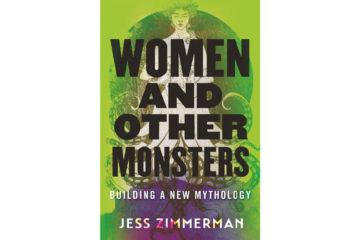Barbara Spindel in The Christian Science Monitor:
 In high school, one of author Jess Zimmerman’s Internet usernames was Medusa. A self-described mythology nerd, her childhood copy of “D’Aulaires’ Book of Greek Myths” was well-worn. But as she recalls in her scorching collection of essays, “Women and Other Monsters: Building a New Mythology,” she particularly identified with the snake-haired creature whose power originated in ugliness: The mere sight of Medusa could turn a man to stone. As a teenager who was profoundly insecure about her looks, Zimmerman writes that calling herself Medusa was “an attempt to recuse myself from the game of human attraction before anyone pointed out that I’d already lost.”
In high school, one of author Jess Zimmerman’s Internet usernames was Medusa. A self-described mythology nerd, her childhood copy of “D’Aulaires’ Book of Greek Myths” was well-worn. But as she recalls in her scorching collection of essays, “Women and Other Monsters: Building a New Mythology,” she particularly identified with the snake-haired creature whose power originated in ugliness: The mere sight of Medusa could turn a man to stone. As a teenager who was profoundly insecure about her looks, Zimmerman writes that calling herself Medusa was “an attempt to recuse myself from the game of human attraction before anyone pointed out that I’d already lost.”
Mythology is rife with hideous female creatures. Many of them, like Medusa, have the face of a woman but other grotesque, unnatural body parts. The Sirens are half bird, half woman; Scylla’s lower half is a mass of snarling dogs; the Sphinx has the body of a lion and the wings of a bird. All of them pose grave dangers to male heroes.
That’s not the only thing they have in common. “All the stories about monstrous women, about creatures who are too gross, too angry, too devious, too grasping, too smart for their own good, are stories told by men,” Zimmerman notes, citing Ovid, Homer, Virgil, and Sophocles. They were intended to be cautionary tales, warning women not to overreach, but the author wonders what would happen if women were to stop reading them as warnings and instead embrace them as aspirations.
More here.
